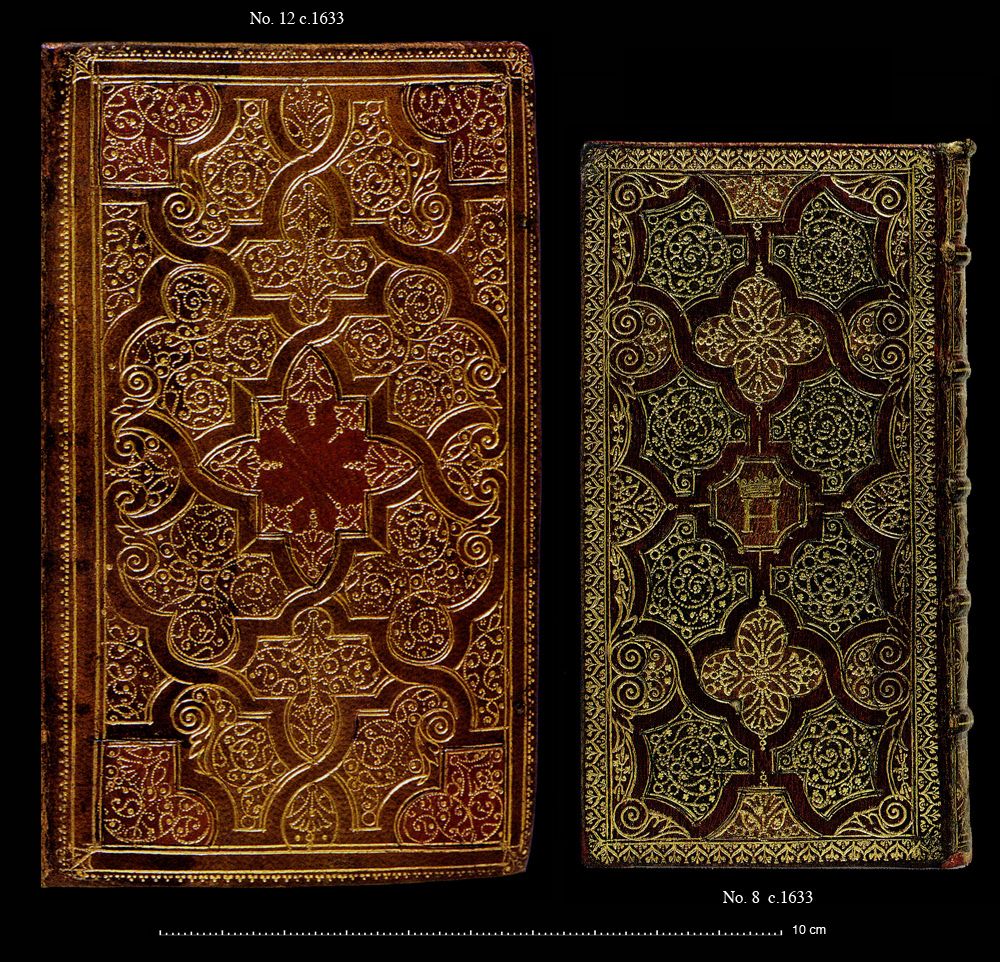

|
On the previous page we have been examining the imprints found on the binding reproduced above, the original photograph of this binding is found in a Ader Tajan auction catalogue (Paris 4 juin, 1993, item #12), (click on the image to see an enlargement). This decorative binding covers a Bible published in 1633. The binding has been attributed to the Atelier of Macé Ruette. In Comparative Diagram 1, I show item 12 and another 1633 binding attributed to Macé Ruette by the authors Isabelle de Conihout & Pascal Ract-Madoux. While these two bindings share some commom tools and were perhaps executed around the same period, I want to point out one major difference, the large spiral that dominates the decoration of the Conihout #8. As stated on the previous page Raphaël Esmerian researched thoroughly the bindings from the Ruette workshops, and published in 1972 a collection of imprint models for the tools of Macé Ruette as well as one for his son Antoine. Below I have reproduced Esmerian's tools for Antoine Ruette to which have have added identifying numbers |
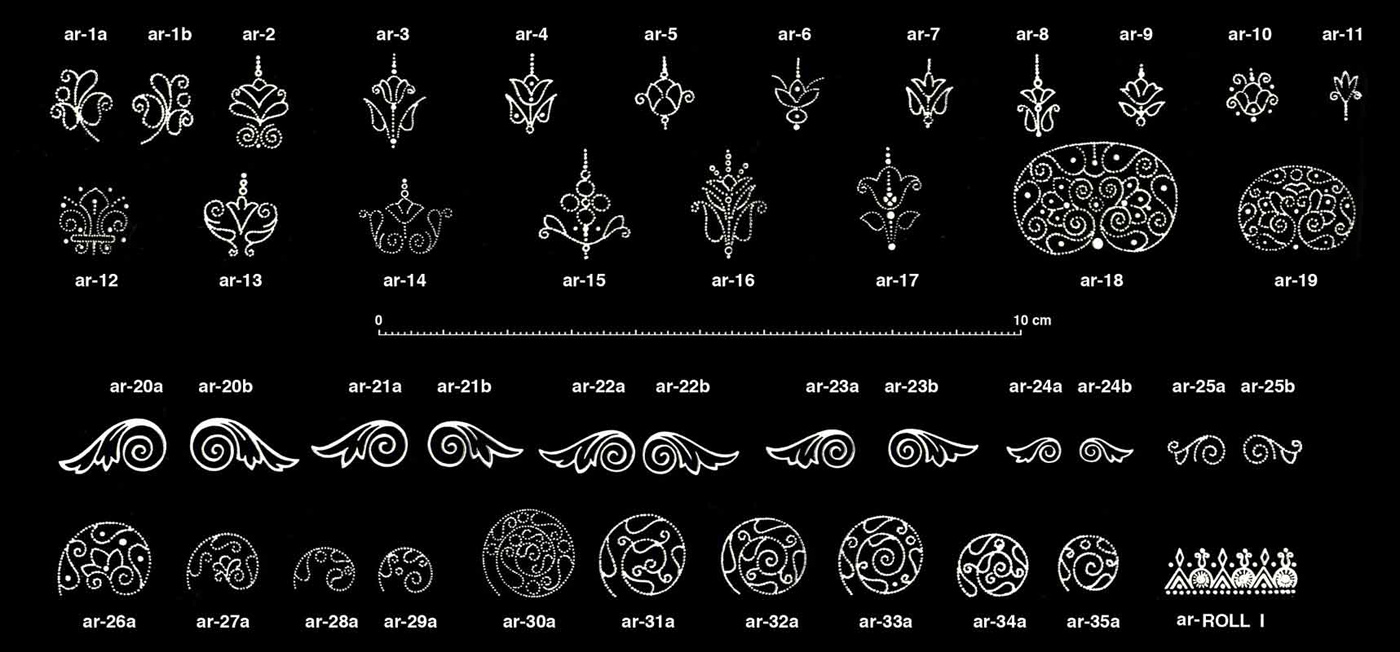
| In Comparative Diagram 2 we discover that the main spiral used to decorate the Conihout example of Macé Ruette #8, is a spiral that Esmerian has placed in the tool imprints of Antoine Ruette, I have designated it as ar-30a. |
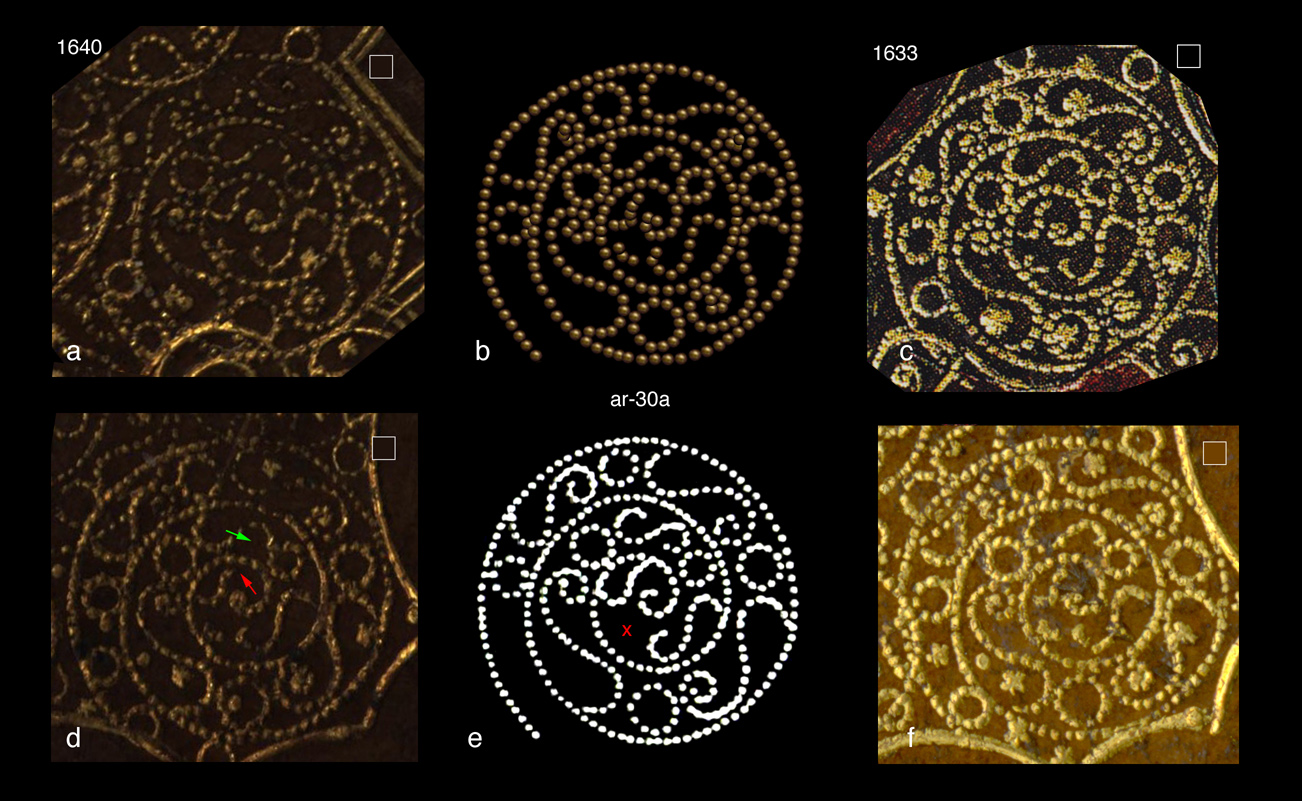
| In Comparative Diagram 3, I have constructed a bead model (e) from actual imprints (a, c, d, f,) that derive from a 1640 (or later) binding. When we compare this with the Esmerian model of this imprint (e) we see that Esmerian's model is not an exact copy and is missing a small detail shown in the location of the red "x". The imprint shown as "c" derives from the Conihout #8, and of course the question then is whether or not this binding was in fact produced by Antoine Ruette. |
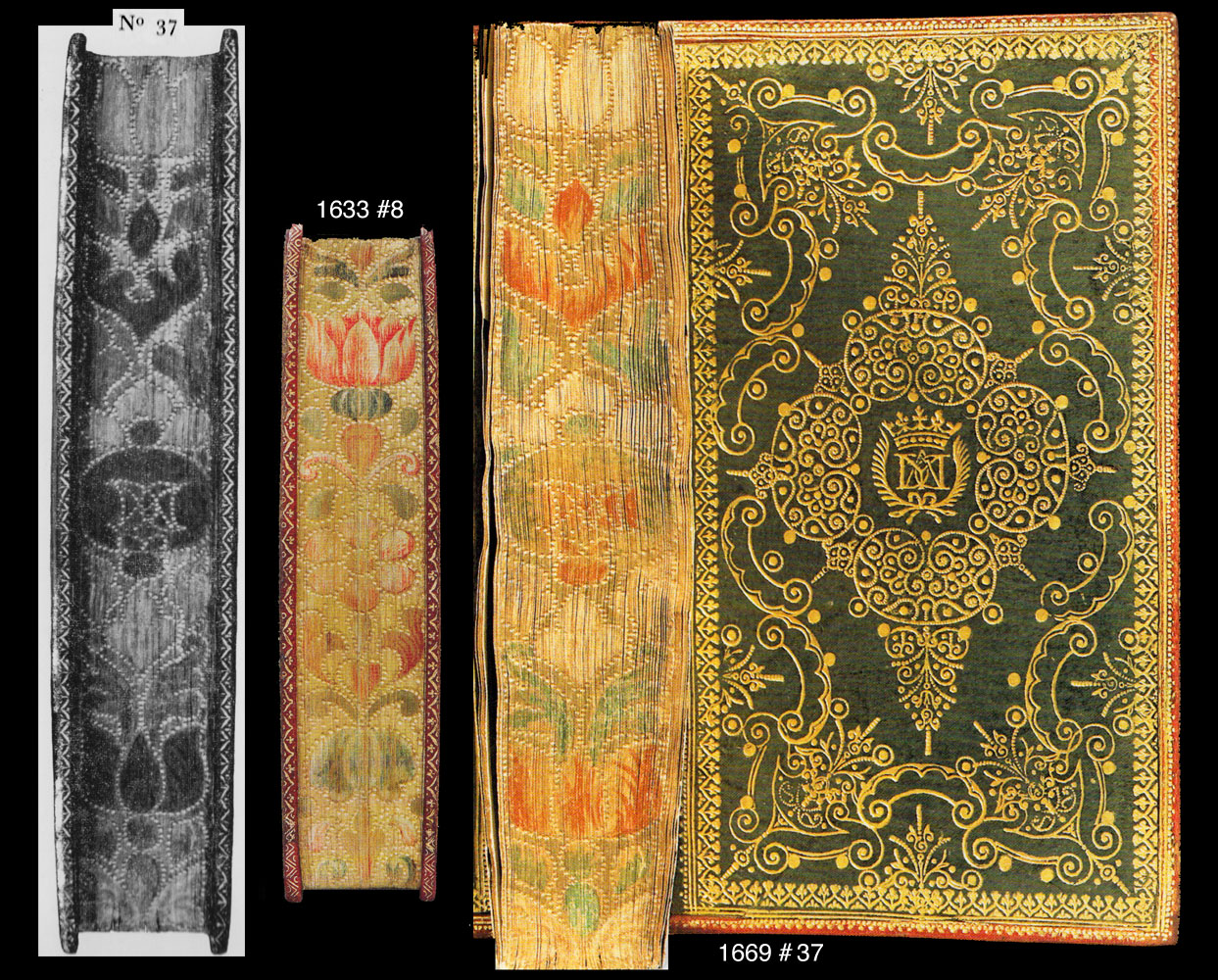
| In Comparative Diagram 4, I compare the 1633 binding with a very luxurious binding that was made by Antoine Ruette some time after 1669 and was perhaps one of the last bindings that he made. This binding is shown in Esmerian's 1972 catalogue and has recently come up for sale at a Sotheby's 2007 auction. At that time it was estimated to be worth anywhere from 90 to 120.000 Euros yes thats right, as much as 164 thousand dollars. Actually it sold for 81,600 EUR (110,415 USD) But what is more interesting and remarkable is that some of the tools and tecniques that Antion used are identical to those found on the 1633 binding. Ever since Hobson critisized the work of Antoin Ruette in 1935 every expert including Esmerian have harped on this issue, which I think is very unjust. However in their item description the Sotheby's experts have at least given Antoine Ruette his due and it is well worth repeating here, even if my rough translation isn't letter perfect. In referring to this particular binding they state... |
|
This binding, of a rare finesse, testifies to the excellence of this binder, and shows that he was just as capable (to achieve a binding of exceptional quality)
as his most accomplished predecessors, his own father Mace Ruette, Le Gascon, Florimond Badier, Pierre Rocolet, Antoine Padeloup, or the famous master Gilder, Maître Doreur. "Celui-ci, d'une finesse rare, témoigne de l'excellence de ce relieur, capable tout comme ses prédecesseurs les plus accomplis, son propre pére Macé Ruette, Le Gascon, Florimond Badier, Pierre Rocolet, Antoine Padeloup, ou le fameux Maître Doreur, de réaliser une reliure de qualité exceptionnelle." |
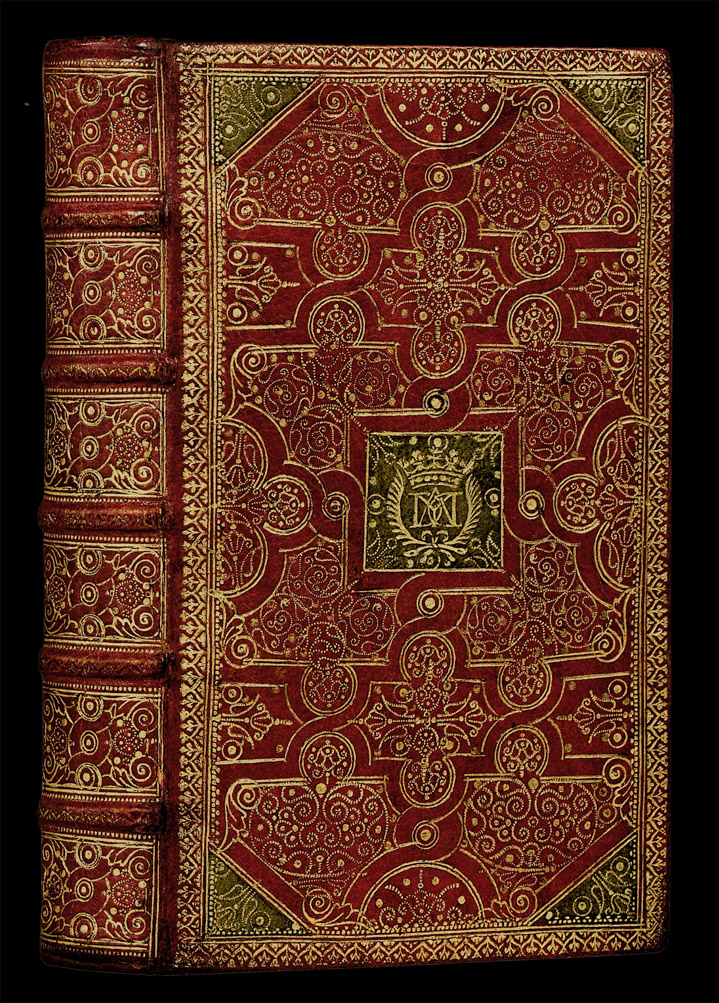
| After making this page I decided that the only way we can hope to sort out the issue of determining which bindings were made by Macé and those of his son Antoine, is by making a complete inventory of all known specimens. I will start with the binding shown above, of which we have some exellent photos that will allow us to reproduce the wide selection of tool imprints found on this particular binding. |
|
See the next page L'Atelier de Macé et Antoine Ruette - Inventory. |
| information about the author | return to the home page of VIRTUAL BOOKBINDING |